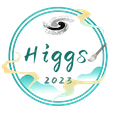Speaker
Description
The discovery of the Higgs boson in 2012 was a triumph for the Standard Model (SM) of particle physics and the mechanism of electroweak symmetry breaking. An essential ingredient to this mechanism is the Higgs potential, which is introduced ad-hoc and assumed to be Mexican-hat shaped in the SM, but cannot be derived from first principles. It is therefore important to probe this shape experimentally. Current measurements of single Higgs boson production only probe the area around minimum of the potential. To determine its precise shape, measurements of processes involving self-couplings of Higgs bosons are needed. In my talk I will present a search for di-Higgs boson production, which is sensitive to the trilinear Higgs boson self coupling, in the final state with two b-jets and two tau-leptons. The search is performed using the proton collision data set collected by the ATLAS experiment during Run 2 of the LHC at a centre of mass energy of 13 TeV. It improves over existing searches in this channel through a refined analysis categorization in combination with improved analysis algorithms. Interpretations of the results are given as constraints on the coupling strength of various Higgs boson self interactions. The results constitute the ATLAS legacy of Run 2 in this particular decay channel.
| You are | PhD student |
|---|

